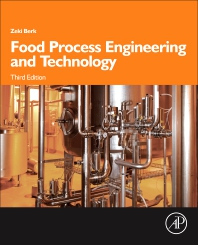Engineering R&D
Speeding up the ATP detection process
ATP bioluminescence testing assures cleanliness before manufacturing process, when every second counts.

Phil Bolea, Technical Scientist, 3M.

3M’s Clean-Trace System was reengineered with photomultiplier detectors in the luminometer (left), increasing the sensitivity of the device while reducing noise. Source: 3M.

Samples are inserted into the luminometer from the top, yielding a measurement in as little as seven seconds. Source: 3M.



Though ATP (adenosine triphosphate) bioluminescence testing can’t distinguish between Listeria or Salmonella or any other organic residue left behind after cleaning, a positive test result should put a delay on production until the equipment and surfaces can be verified to be clean. Shortening the results time in testing can mean more samples tested and more areas verified as clean—which allows more time for production.
3M Food Safety’s Clean-Trace Hygiene Monitoring and Management System has always been fast, but the search continues for methods to improve testing speed and accuracy. And surprisingly— photomultiplier tubes (PMTs), which have been around since the 1940s, provide an excellent way to increase sensitivity, improve precision, shorten testing time and increase the number of samples that can be checked.
Today’s PMTs are more refined than their earlier siblings, and they are more sensitive and have a wider dynamic range than any solid-state device, which is good news for the 3M Clean-Trace System, meaning that Clean-Trace can detect lower levels of light emitted by the ATP process and do it faster with more precision. But, why is this important?
To find out, I asked 3M Technical Scientist Phil Bolea, who has played a major role in the design of Clean-Trace’s new detection capabilities, to elaborate.
FE: For those not familiar with ATP testing, how does it work?
Phil Bolea: When ATP is captured from a surface or water sample and then combined with a reagent, it produces light. The light produced is not perceivable to the naked eye. Because the amount of light is very small, the equipment that is needed to measure this must be sophisticated and accurate. It’s like using a telescope to identify stars that are not visible.
But ATP bioluminescence also has very down-to-earth uses in the food industry as a rapid, simple and reliable test to monitor surface for potential contamination. In the case of surface contamination, a pen-like device containing reagents is simply swabbed over an area, then activated and inserted into a handheld reader called a luminometer. The luminometer displays results within seconds in relative light units (RLUs), indicating whether or not it meets the pass/fail standards.
ATP bioluminescence began to gain traction in the late 1980s, prompted, like many hygiene methods, by large, public cases of food poisoning. Initially, the technology was used in laboratories, where suitcase-sized luminometers had to be plugged into a direct power source and required sophisticated users. In the early 1990s, battery power allowed smaller devices to be lugged to manufacturing sites, but they still weighed about four pounds. In the past several years, the technology has evolved into rapid-response handheld readers weighing about a pound.
FE: Why is it important to extend the sensitivity to exceptionally low levels of light photons in Clean-Trace? In extending this sensitivity, how much danger is there in picking up extra noise along with the desired, weak signal?
Bolea: Improving the sensitivity of the luminometer allows lower levels of light from the ATP sample to be detected. This lowers the limit of detection for surface contamination. As customers and regulatory organizations demand cleaner and cleaner processes, ATP detection systems need to be more sensitive. PMT technology is the only detection method that has a low enough signal-to-noise ratio. Additionally, it is significantly faster than silicon-based detectors.
FE: What, in a nutshell, is the issue with solid-state photo detectors? After all, our cameras and phones use them.
Bolea: Cameras common to mobile devices image pictures that are very bright relative to light generated from ATP. These cameras require trillions of photons per second to form a relatively noise-free image. As the camera tries to acquire images of darker scenes, the resulting image is overwhelmed with noise. The integration time also increases. This is the same kind of effect that occurs when photodiodes try to measure light levels approaching photon counting. The integration time extends, and the signal of interest is overwhelmed by noise.
FE: How does the cost of building a PMT into the instrument compare with using solid-state photo devices?
Bolea: There are many kinds of PMTs that range in cost. We have critically selected the PMT used in the 3M Clean-Trace System for best performance and cost. Photodiodes, to perform effectively in a manufacturing environment, may require additional temperature control or compensation to operate at their limit of detection, which is thousands of times less sensitive than PMT technology.
FE: What is the speed improvement or sensitivity improvement in using a PMT over a solid-state device?
Bolea: The 3M Clean-Trace System is about two times faster than photodiode-based luminometers. The system is greater than 100 times more sensitive to light than photodiode-based luminometers.
FE: How does this speed/sensitivity improvement pan out to real-world use in cleanliness testing? What can food and beverage processors expect?
Bolea: If implemented correctly, PMT technology will yield faster time to result, better precision (repeatability of a measurement), better accuracy (average measurement closer to the ground truth) and less influence from environmental conditions (ambient temperature is a major factor for photodiodes). Photodiode-based luminometers typically require long calibration times after turning on power, 60 seconds or more. Once the photodiode-based luminometer is ready to take a measurement, it will take 12 to 15 seconds to display the RLU value. The 3M Clean-Trace System, on the other hand, does not have a lengthy wait after turning on power, and the measurement time is seven seconds. That is an eight second per measurement time reduction or one-minute time savings for about every eight measurements. This makes a big difference in customers’ fast-paced environments.
FE: What’s the roadmap for ATP bioluminescence testing for the next five to 10 years?
Bolea: Industry and regulatory trends are pointing toward cleaner systems. This was a primary driver as we designed and engineered the 3M Clean-Trace System. The ability of our new system to accurately detect smaller and smaller amounts of ATP over the next five to 10 years was a must-have.
FE: What was the development process like?
Bolea: Throughout the development process, the team understood that not only was the selection of the best technology—PMT—critical, how it was engineered into the new system would be equally important. The team worked diligently and through many prototypes to determine the best engineered design that could optimize the performance of the PMT. The result is a robust system that has improved performance across the critical areas our customers needed—precision, sensitivity and time to result.
Looking for a reprint of this article?
From high-res PDFs to custom plaques, order your copy today!













